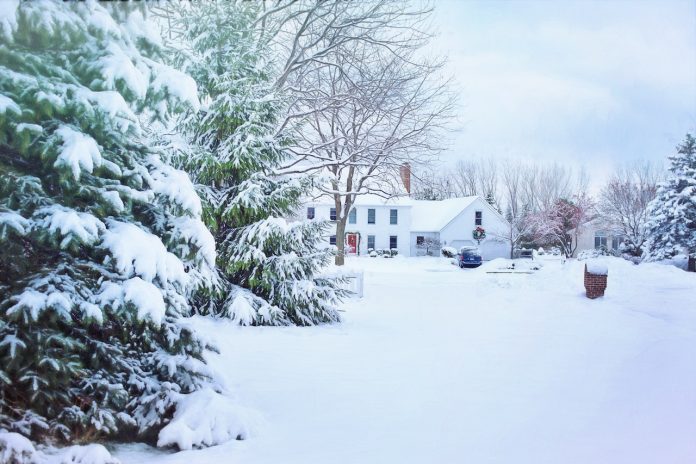Winter can be one of the most challenging seasons of the year. With shorter daylight hours, colder temperatures, and the added stress of the holiday season, it’s natural to feel overwhelmed. However, winter’s unique challenges don’t have to leave you worried. Implementing smart home improvements during this season can enhance your comfort, boost energy efficiency, and even reduce utility costs. Below are several essential winter home improvement ideas that can make your living space cozier and more efficient throughout the colder months:
1. Heating System Maintenance
Proper maintenance of your heating system not only prevents costly breakdowns but also enhances energy efficiency, saving money throughout the winter. Key maintenance tasks include:
- Verifying thermostat accuracy and functionality
- Replacing or cleaning air filters regularly
- Cleaning heating coils for optimal performance
- Repairing any system leaks promptly
- Checking refrigerant levels if applicable
- Inspecting and adjusting the blower belt
Scheduling professional inspections annually can further ensure your heating system operates smoothly and safely.
2. Insulate Your Home for Energy Efficiency
Improving your home’s insulation is one of the most effective ways to reduce energy consumption and maintain a comfortable indoor temperature. Focus on:
- Sealing gaps, cracks, and leaks in the building envelope
- Adding or upgrading insulation in attics, walls, and floors
- Ensuring proper sealing and insulation of doors and windows
These improvements can significantly decrease heat loss, leading to lower utility bills and a warmer home.
3. Weatherproof Your Windows and Doors
Prevent cold drafts and heat escape by weatherproofing windows and doors. Effective methods include caulking and applying weatherstripping around frames, installing storm windows, or using insulation kits with plastic film. These simple upgrades help maintain indoor warmth and reduce energy costs during winter.
4. Install a Programmable Thermostat
A programmable thermostat optimizes heating schedules based on your daily routine, reducing energy use when you’re away or asleep. Modern smart thermostats can also learn preferences and adjust settings automatically, ensuring comfort while lowering energy bills.
5. Clean Your Chimney and Fireplace
Annual chimney and fireplace cleaning is crucial to prevent dangerous soot and creosote buildup, which can pose fire hazards. If you frequently use the fireplace, consider cleaning it more often. Always follow safety protocols or hire a professional chimney sweep.
6. Replace Your Furnace Filter
Replacing your furnace filter every 1–3 months maintains efficient airflow and improves indoor air quality by reducing dust and allergens. This simple step extends the life of your furnace and enhances heating performance.
7. Check the Lighting System
Verify all indoor and outdoor lighting, including emergency fixtures, to ensure bulbs are functional and fittings are secure. Upgrading to LED bulbs can deliver substantial energy savings due to their long lifespan and low electricity consumption. Consult a licensed electrician before major lighting system upgrades to confirm compatibility with your home’s wiring.
8. Hang Thermal Curtains To Keep the Heat In
Thermal curtains act as an additional barrier against heat loss through windows by trapping warm air and reducing drafts. They are easy to install and widely available in home improvement stores, providing an affordable and effective solution to keep your home cozy during winter.
9. Take Care of the Swimming Pool
Outdoor pools can significantly impact your home’s energy efficiency if not properly winterized. Use a durable pool cover to retain heat and minimize debris accumulation. Work with professional pool service providers to clean, repair, and winterize the pool correctly. Lowering the water level and disconnecting or storing pool heaters can prevent freeze damage during harsh winters.
10. Sweep Snow off Your Roof To Prevent the Formation of Ice Dams
Heavy snow and ice accumulation on rooftops can lead to ice dams, causing water to back up under shingles and leak into your home. Removing excess snow regularly with a roof rake helps protect your roof and interior from damage during winter storms.
Bottom Line
By investing in these winter home improvement projects, you can create a warmer, safer, and more energy-efficient living environment. Proper preparation not only enhances your comfort but also helps reduce energy expenses during the colder months. While some upgrades may require an upfront investment, the long-term savings and improved home value make them worthwhile.
Additionally, staying informed about the latest home efficiency technologies and seasonal maintenance tips can further enhance your home’s performance year-round. For a deeper dive into related topics, including energy-saving devices and home safety, explore 7 Home Updates to Make Before Listing by visiting our Decoration category.
Winter home improvements go beyond just weatherproofing and maintenance. Incorporating smart home technologies such as energy-efficient thermostats, automated window treatments, and advanced insulation materials can transform your home into a modern, comfortable sanctuary. Upgrading to energy-star rated appliances and sealing ductwork can also greatly reduce energy waste. Remember, a well-maintained home not only keeps you cozy but also contributes to sustainability by lowering your carbon footprint. Taking proactive steps now ensures a safe, efficient, and enjoyable winter season for you and your family.

























